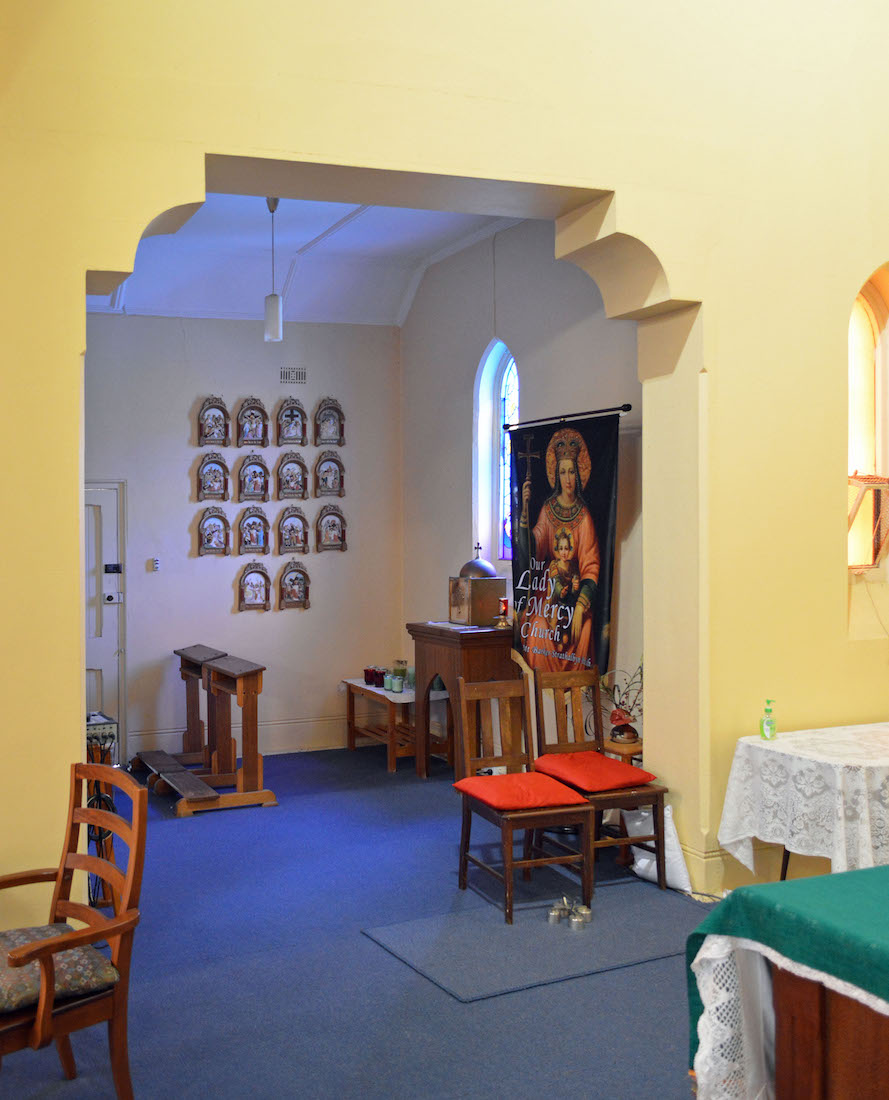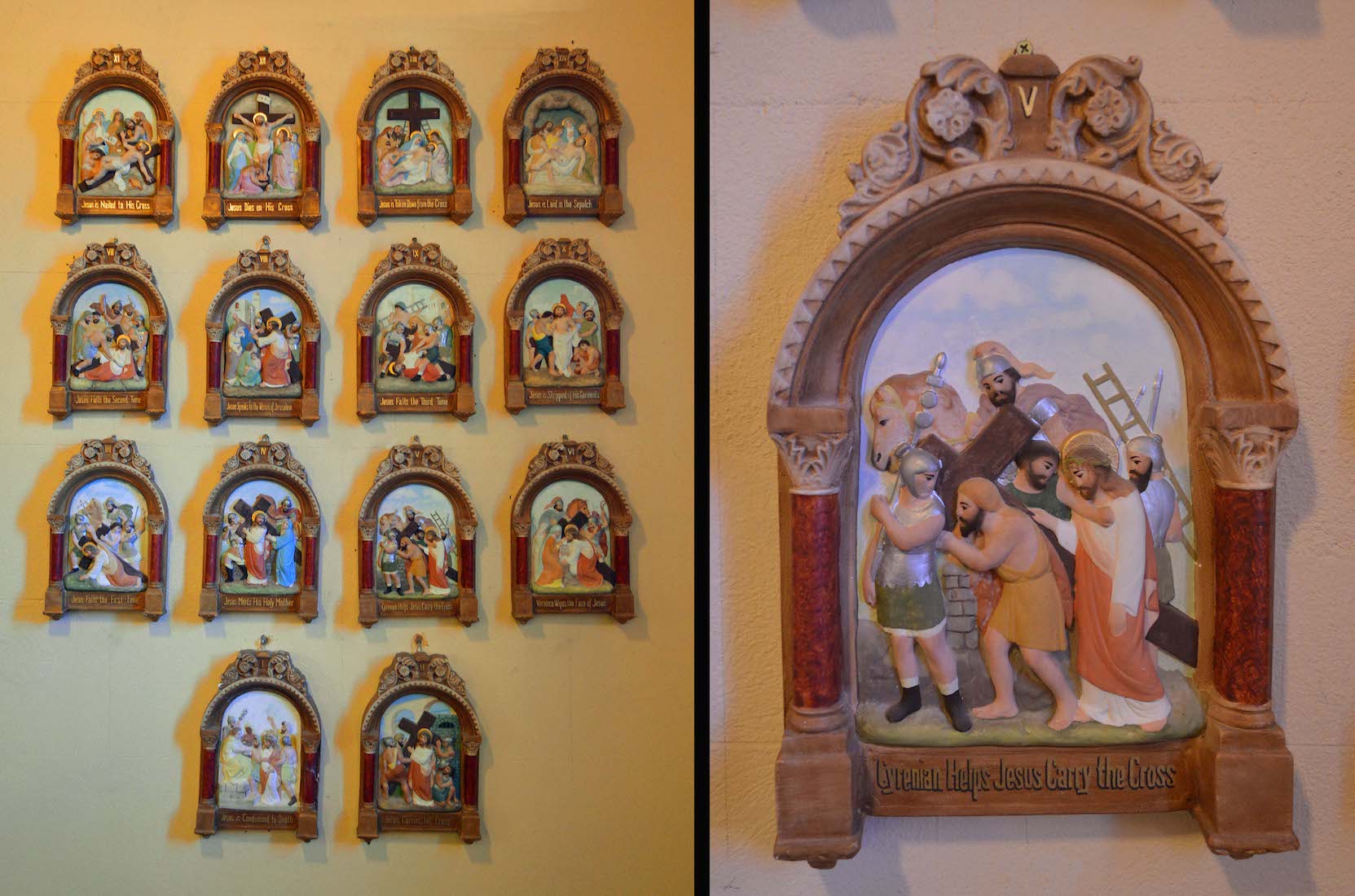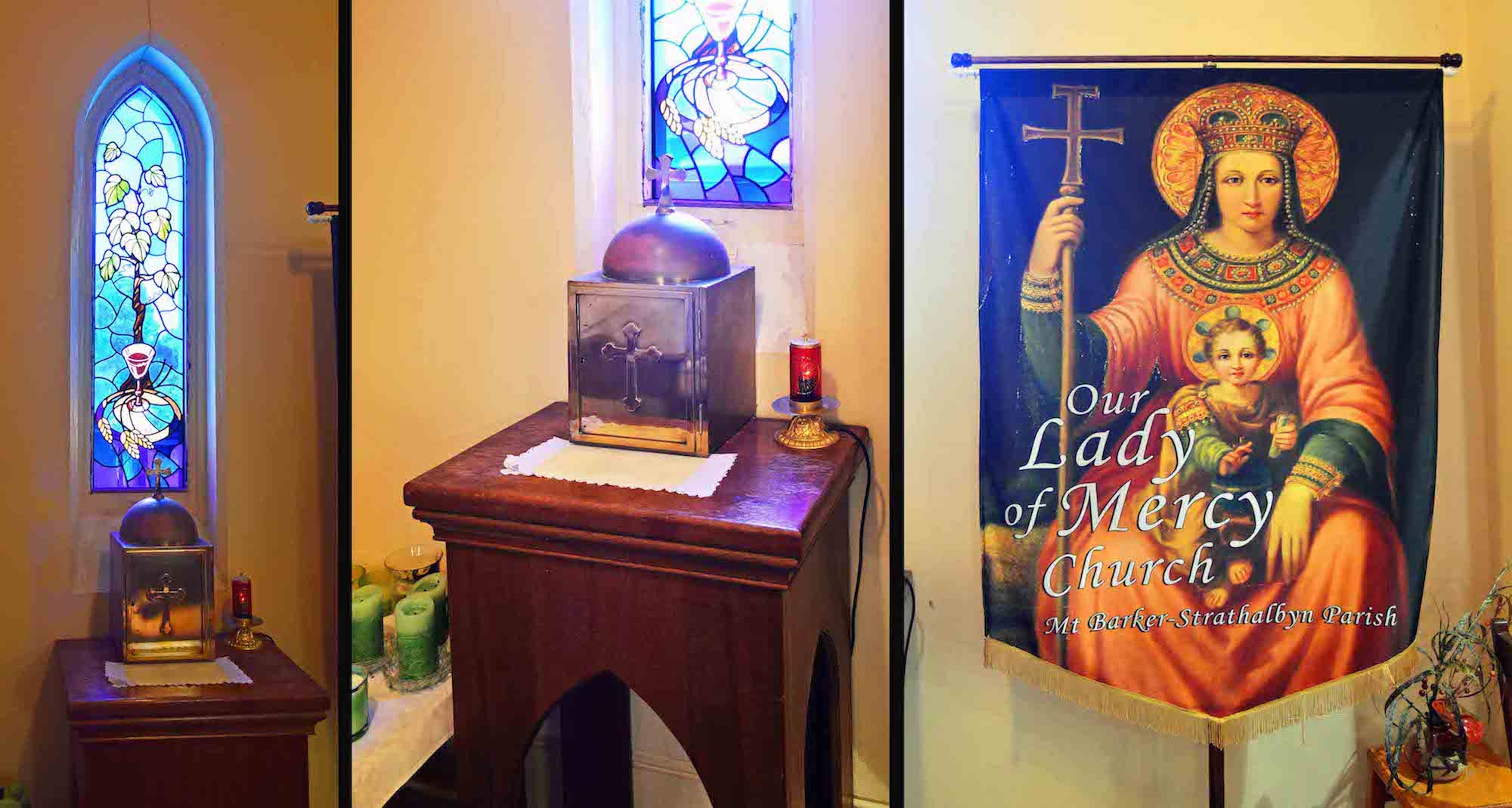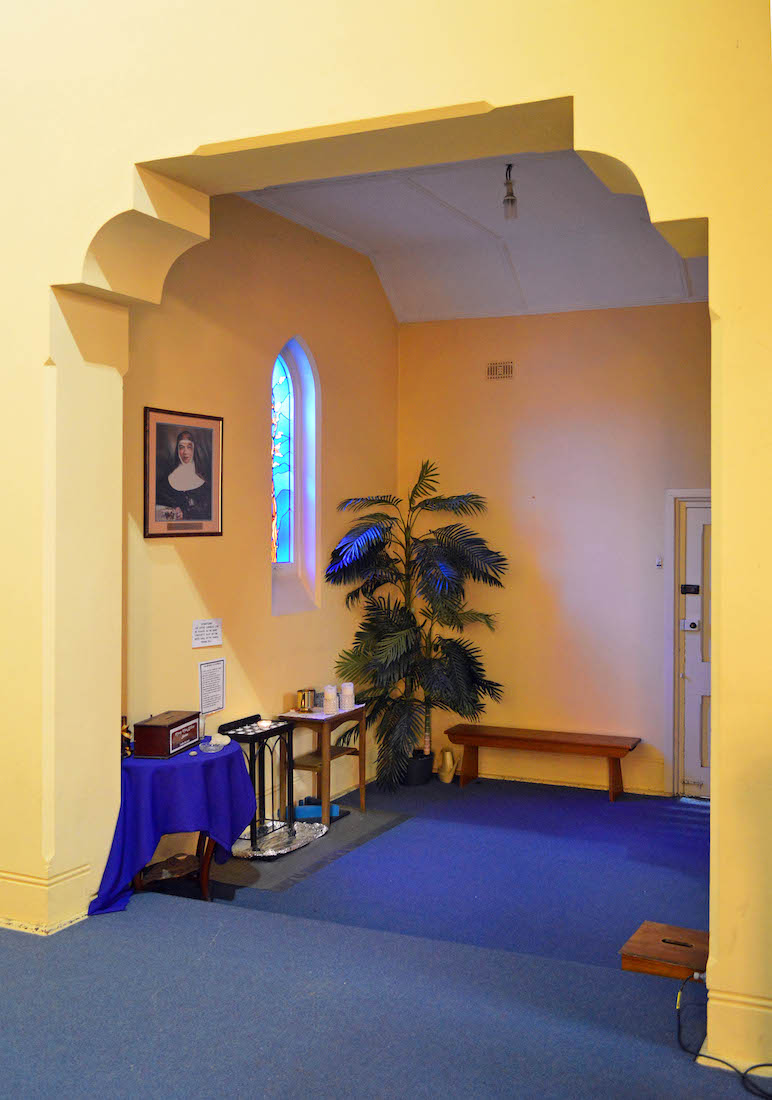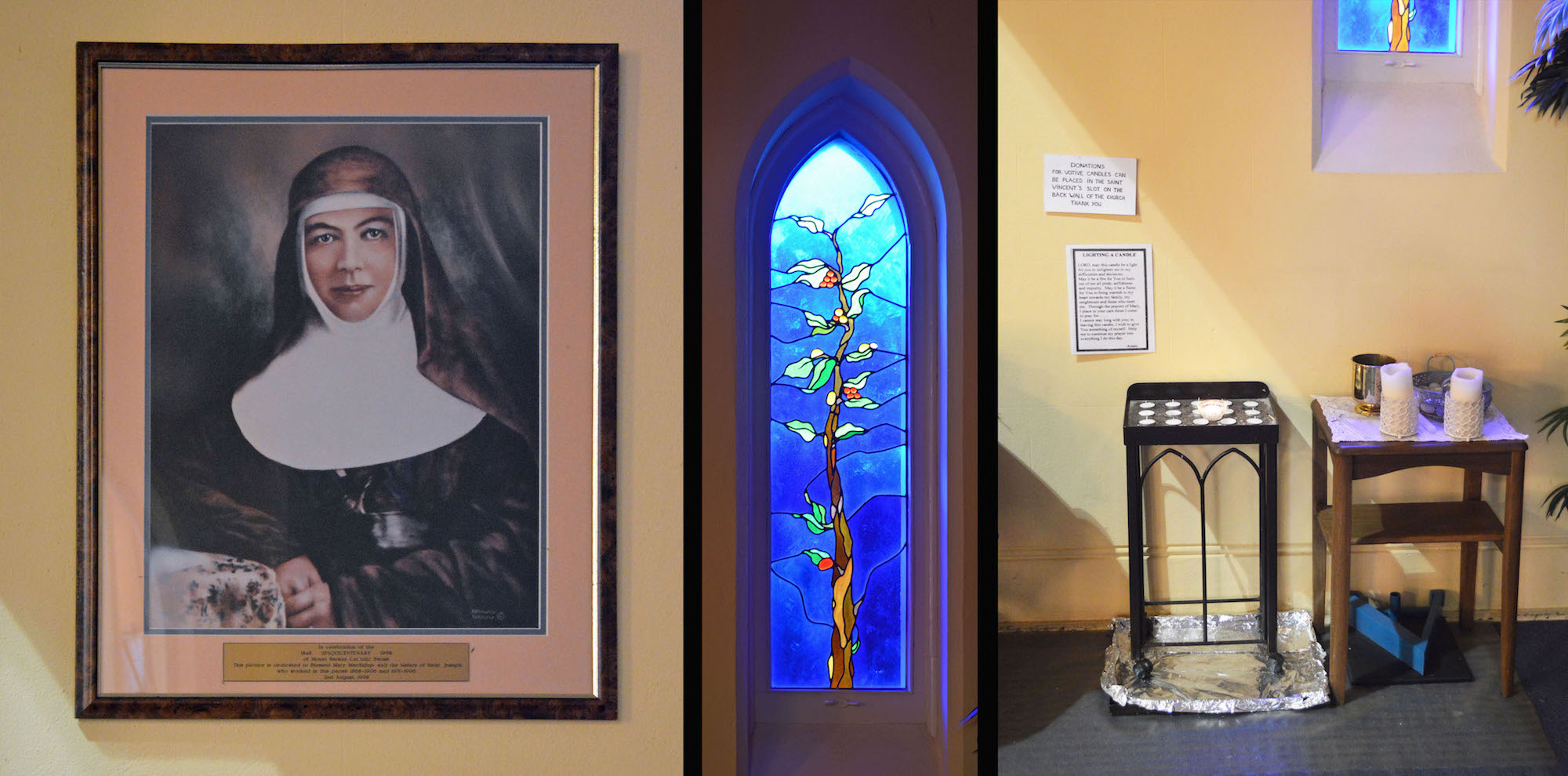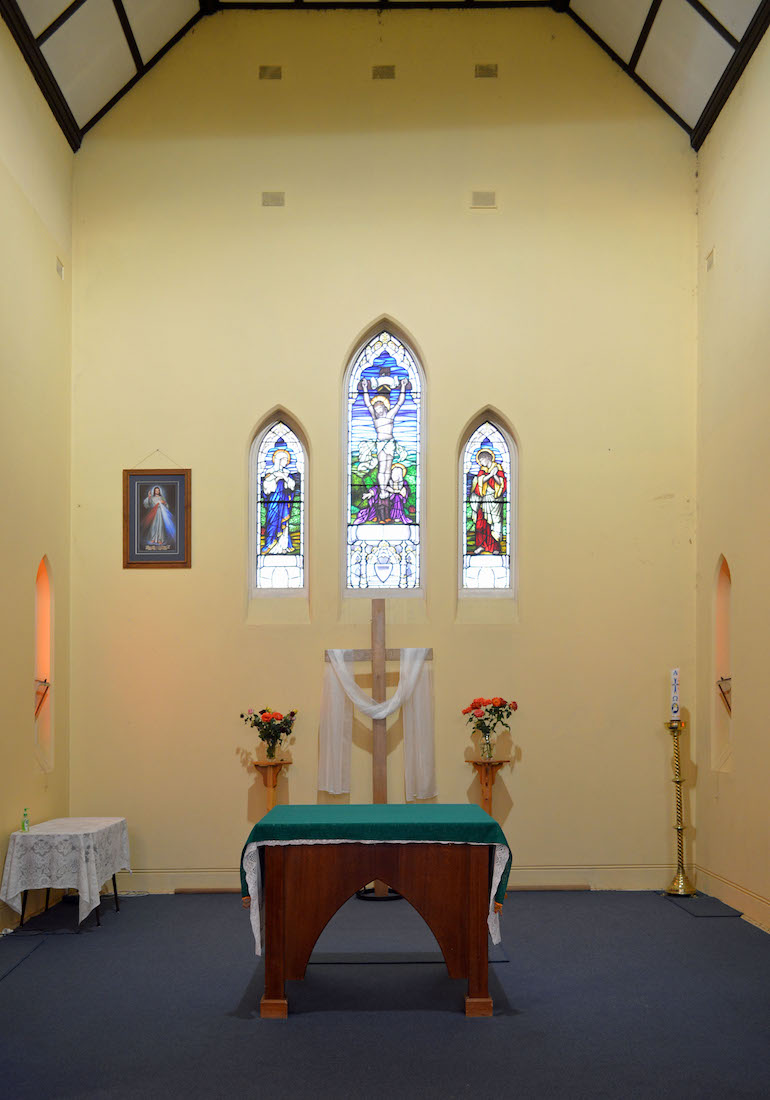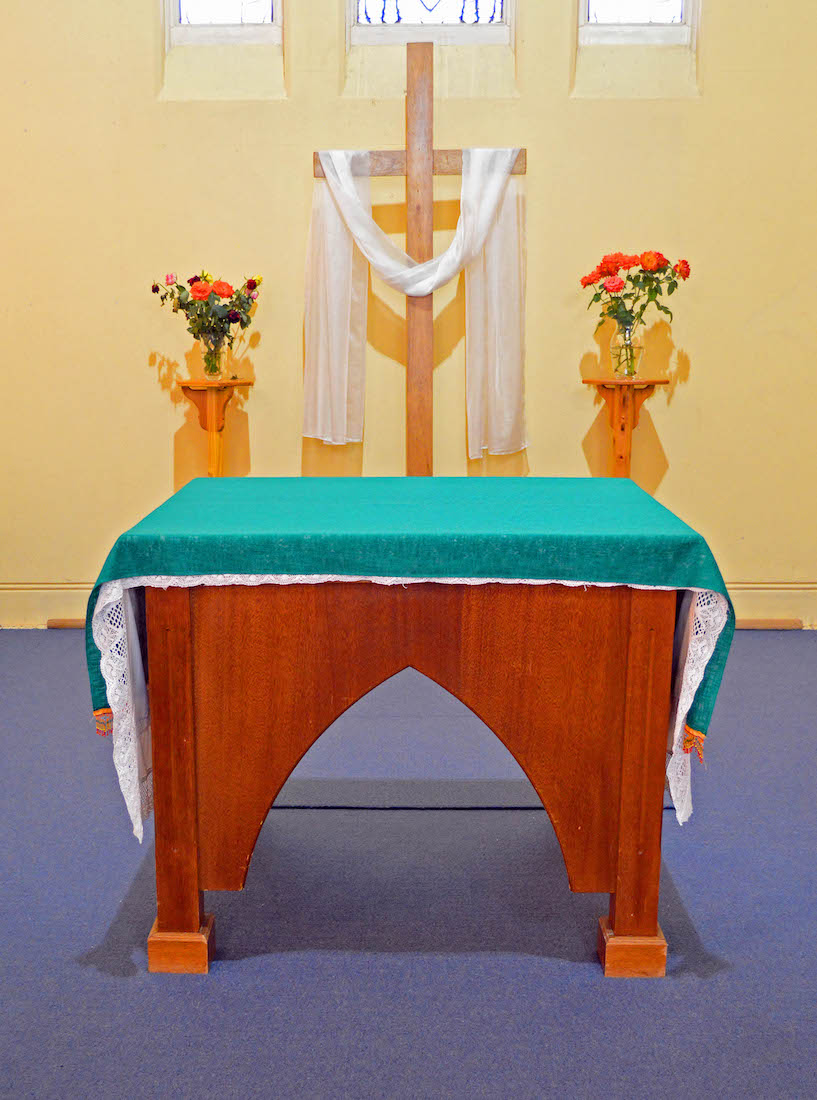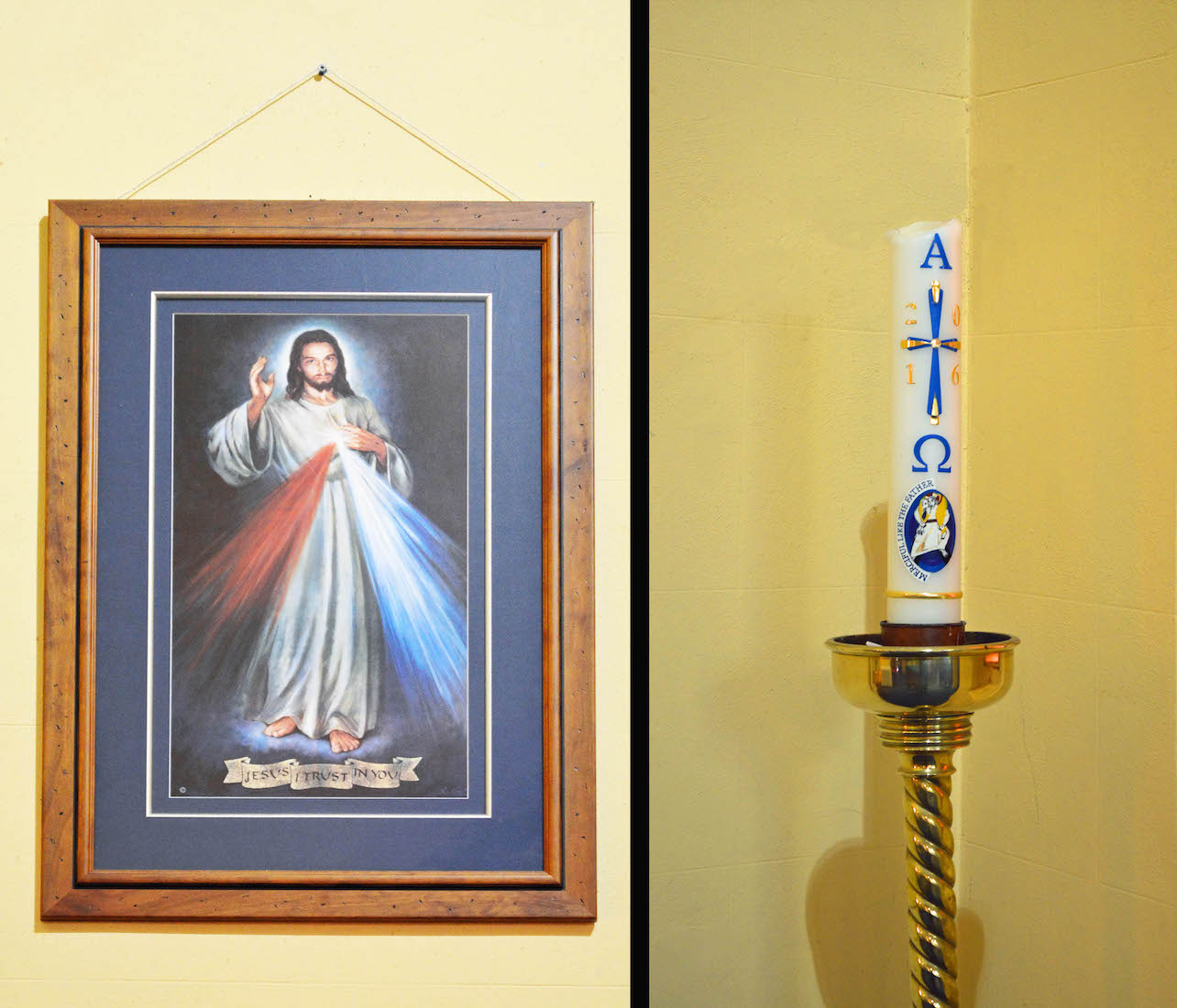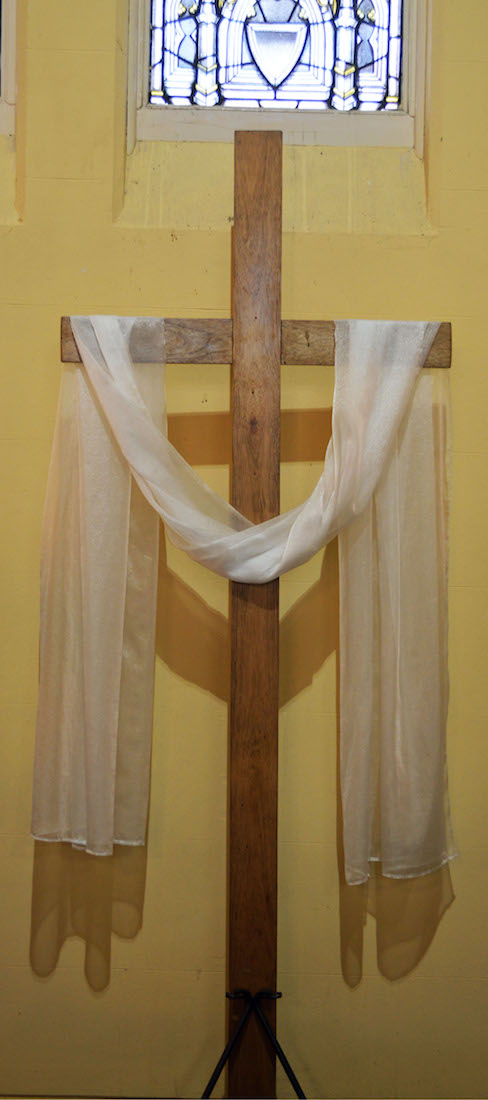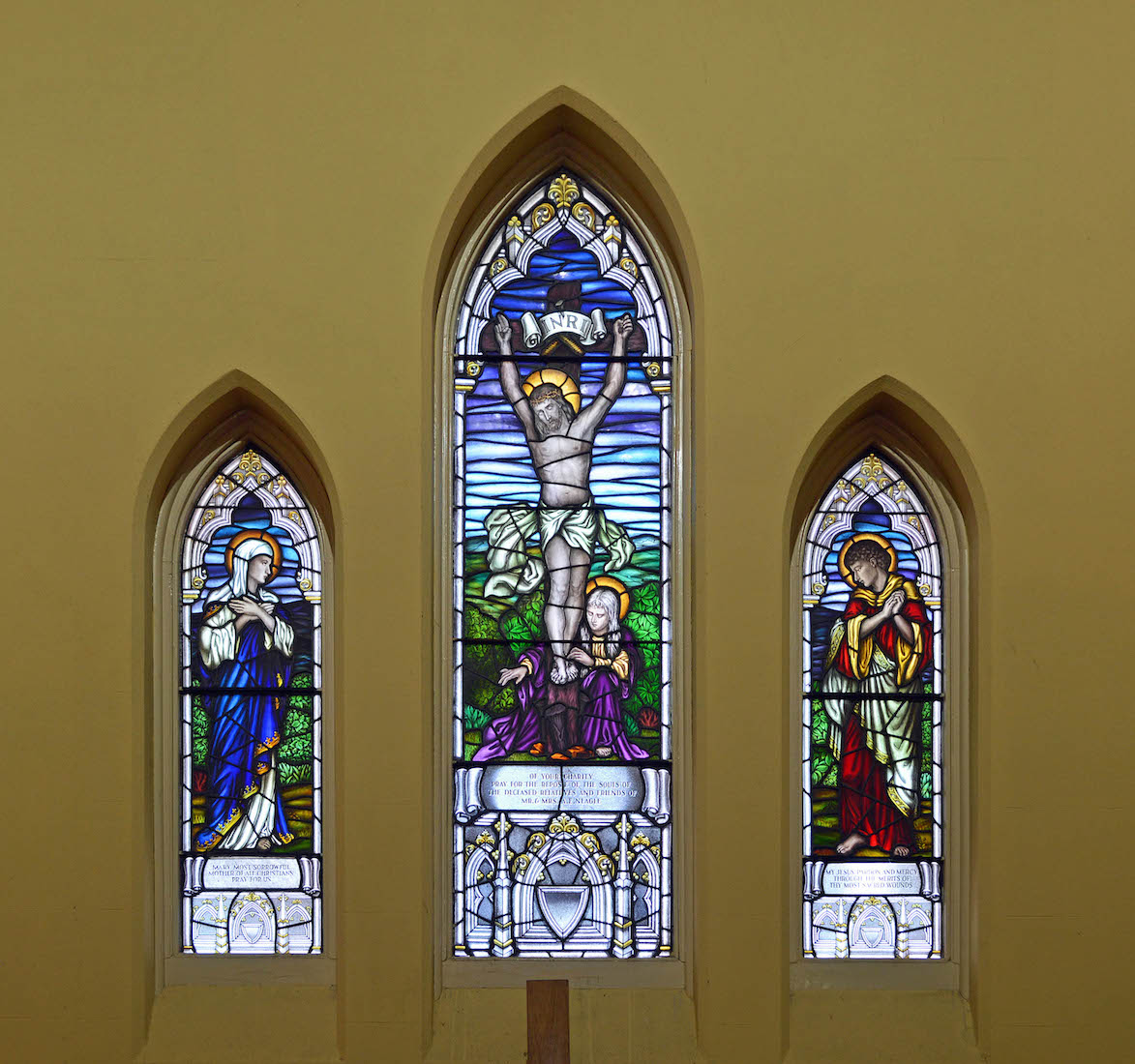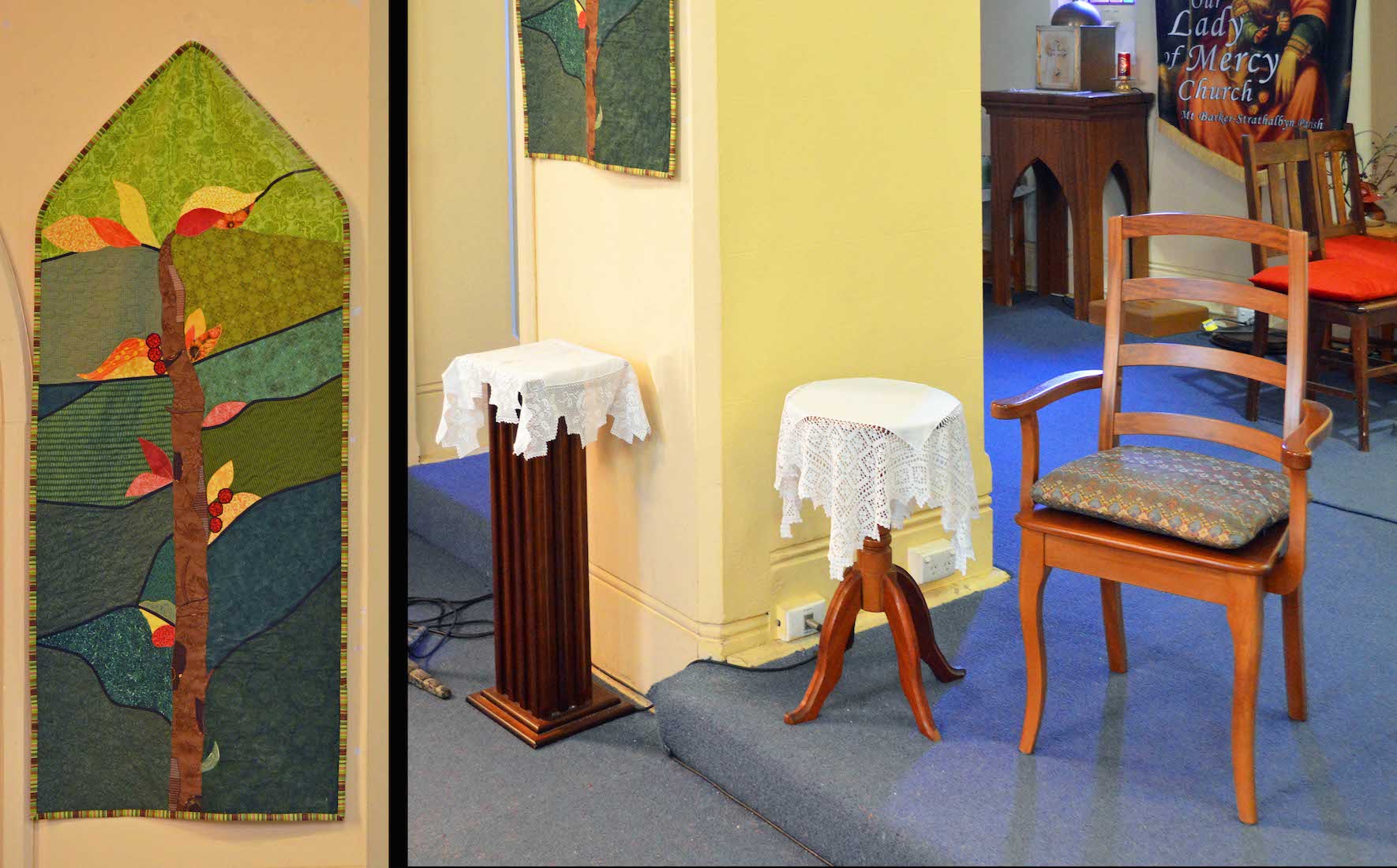
On the left side of the sanctuary arch is a simple arrangement of furniture (pedestal, table and chair) and a green ‘tree of life’ banner on the face of the arch. I am intrigued by this recurring theme: a simple trunk with leaves and berries sprouting along its length. A symbol of Christian growth? Or a symbol of church growth and mission? INDEX
42. AMBO AND MADONNA
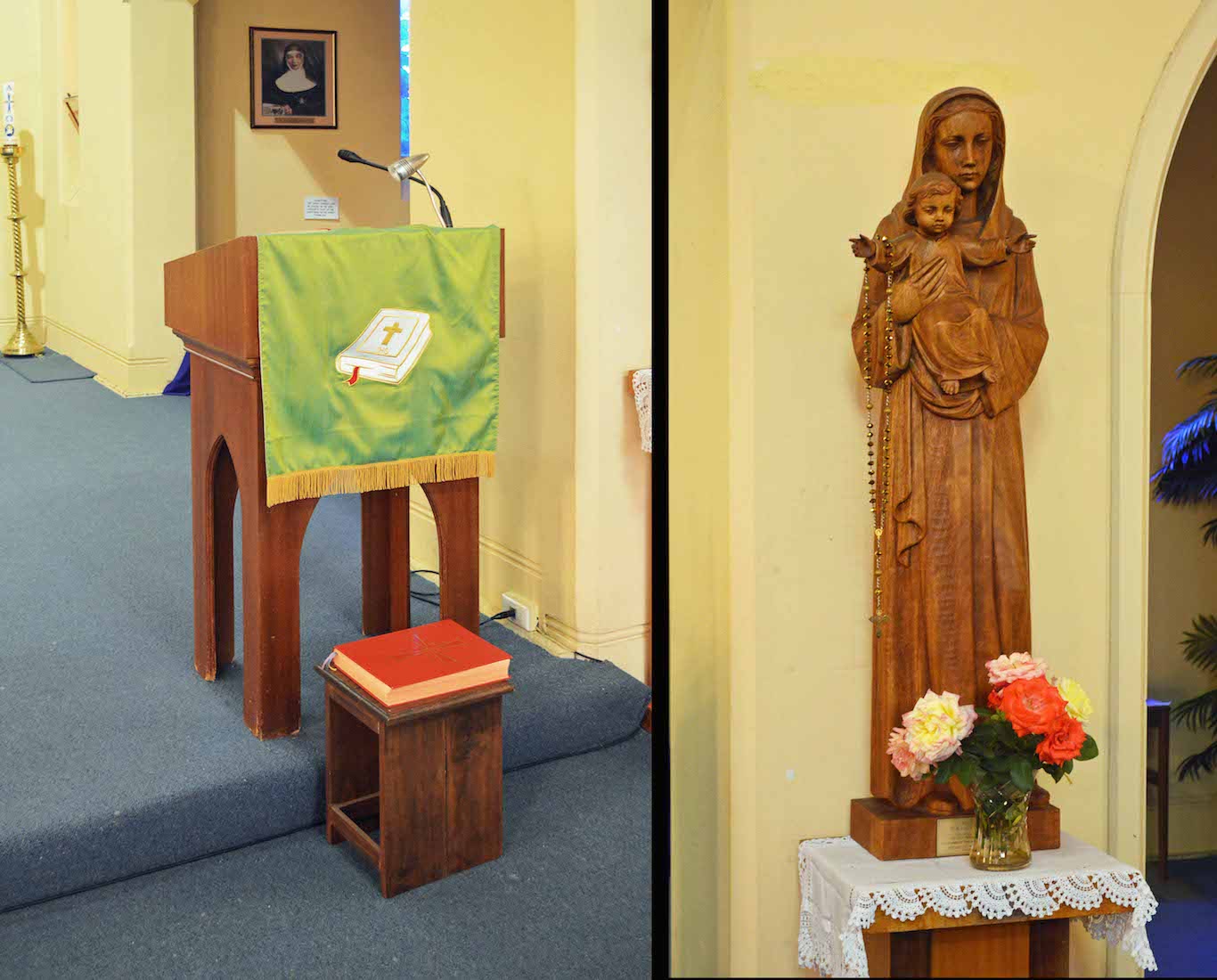
On the South side is this ambo: a stand which supports a Bible or set of notes for those speaking to the congregation. This ambo is modern and created with featured gothic arches like the central altar and the baptismal font. These also nicely complement the sanctuary arch. The Madonna and Child stand in front of the sanctuary arch on this side.
43. NORTH SANCTUARY
From our walk around the exterior of the Church we have noticed that the Easternmost addition to the nave is wider than the nave. Inside, this can be seen by an extension on either side of the sanctuary.
44. MORE STATIONS OF THE CROSS
As we enter the North sanctuary, the first thing that catches out attention is a delightful set of Stations of the Cross on the far wall. The pastel shades, rounded figures and expressive faces make this set very appealing.
45. BLESSED SACRAMENT CHAPEL
We now notice that the single lancet window illustrates the Eucharist, and on the altar stands a tabernacle with a lit sanctuary lamp beside it. This is where the reserved Elements of the Eucharist are kept – Elements which have been blessed for later use. At right is a parish banner, with the parish including this Church and the church at Strathalbyn.
46. SOUTH SANCTUARY
There is another space on the South side of the sanctuary. On the East wall is another single lancet window, and a recognizable photograph.
47. SHRINE
I would have expected perhaps a Lady Chapel here, but this space is harder to identify. There is a photograph of St Mary of the Cross, the first and only Australian saint. Mary and the Sisters of Joseph worked in this parish 1868 – 1906 and 1971 – 1996. The ‘tree of life’ image appears once more in this bright blue window. There is also a place here to light a candle in praise or prayer.
48. SANCTUARY
We return to the central sanctuary with its simple altar, Cross, picture, candle, and triplet of lancet windows. It is surprising that these East windows of this Church are not larger, although that may be to do with the hot rising sun in summer.
49. ALTAR
As mentioned earlier the wooden altar is made with a design common to the ambo and baptismal font. There is a single altar in this Church, although it probably had a ‘high altar’ in the early days. This is the functional centre of worship from where the Eucharist is administered week by week.
50. DIVINE MERCY AND PASCHAL CANDLE
The Paschal Candle is commonly found in Catholic and Anglican churches where it symbolizes the Light of Christ. The Divine Mercy of Jesus (left), also known as the Divine Mercy, is a Roman Catholic devotion to Jesus Christ associated with the reputed apparitions of Jesus revealed to Saint Faustina Kowalska. The Roman Catholic devotion and venerated image under this Christological title refers to the unlimited merciful love of God towards all people.
51. CROSS
The Christian Cross, seen as a representation of the instrument of the crucifixion of Jesus, is the best-known symbol of Christianity. It is related to the Crucifix – a Cross that includes a usually three-dimensional representation of Jesus’ body. Over Lent and Easter the Cross is often decorated with various coloured symbolic drapes.
52. EAST WINDOWS
These three lancets depict the Crucifixion of Christ with Mary and John on either side. The texts read: ‘Mary most sorrowful Mother of all Christians, pray for us’; ‘Of your charity pray for the repose of the souls of the deceased relatives and friends of Mr & Mrs A.E.Neagle’; ‘My Jesus, pardon and mercy through the merits of thy most sacred wounds’. This completes our tour of this Church.
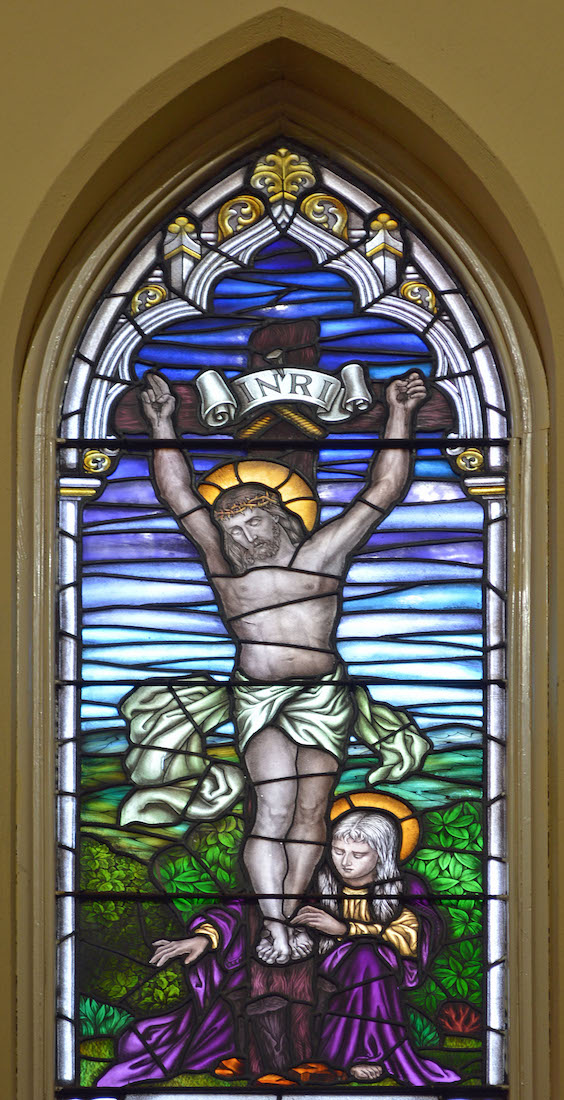
CONCLUSION
I hope you have enjoyed visiting the Our Lady of Mercy Catholic Church, Mt Barker with me. I found it a very interesting church to explore, especially after not finding it for many years!
I am happy to receive constructive comments or corrections concerning this website. The best websites are the ones which have no errors! I am grateful to my wife Margie who came to Mt Barker with me, and who has proof-read these pages.
The local parish has its own website which contains a little interesting information about the parish, but disappointingly little about the Church itself. The link for this is:
http://www.barkerstrathcatholic.com/
The photographs which appear on this site can also be found in higher resolution at:
https://www.flickr.com/photos/paulscottinfo/albums/
Site created 03 / 2017 ; reformatted 01 / 2021
Paul Scott

